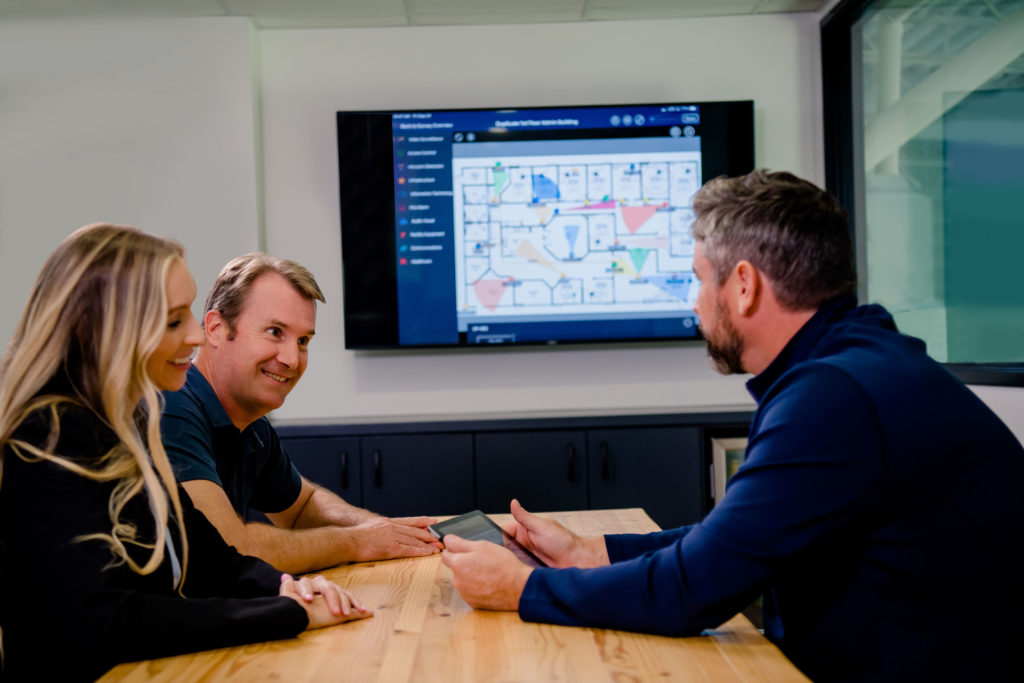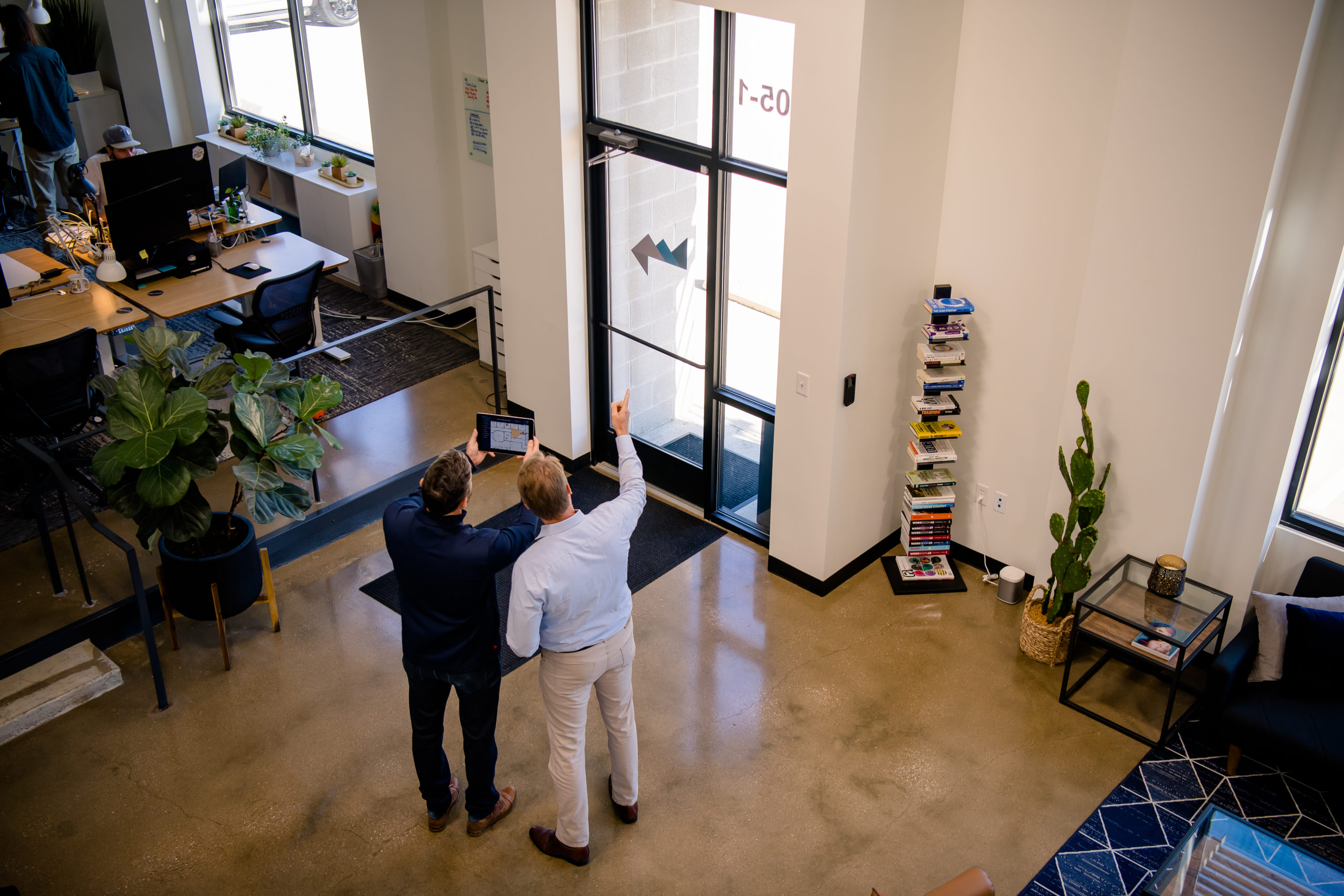Merger as a Catalyst for Digital Transformation
Has your system integration firm gone through a merger or acquisition lately? If so, you’re in good company. (And if not, this could be the year, according to several industry reports we’ll cover later on.)
During this period of elevated M&A activity in the physical security industry, it’s time for businesses of all sizes to reevaluate their processes and the tools they use.
Now is the time for collaboration software in system design and management as a way to bridge teams, improve processes, and grow sales.
The M&A Market for System Integrators Has Been Red Hot

Why are we talking about this now? Because the M&A market is perhaps hotter than it’s ever been among system integrators. Valuations have been strong, leading to higher levels of activity.
This is in part due to continued growth in the industry: the SIA’s bimonthly Security Market Index shows an overwhelmingly high percentage (approximately 85%) of security leaders predicting improvements in business conditions in the coming month.
Drilling down to systems integrators, the SMI jumps even higher, to 68, with a whopping 95% responding “excellent” or “good” regarding the business conditions in the security systems integrator segment. That was evident as well at the 2023 SIA ISC West conference with highest levels of attendance in year.
SS&I points to 10 major security mergers and acquisitions in 2022, including:
- Chubb Fire & Security sold to API Group Corp. for $3.1 billion
- Vivint Smart Home acquired by NRG for $2.8 billion
- State Farm acquires 15 percent stake in ADT for $1.2 billion
- An affiliate of Gemspring Capital Management gained a majority interest in Security 101
Up and down the scale within the physical security services industry, from legacy titans to new-school high-tech challengers, we’re continuing to see activity in this space into 2023 as buyers pursue smaller system integrators to bolster their reach and consolidate the competition. Charles Durant, managing director at Sandra Jones and Co., predicts that in 2023 the M&A trend will continue especially among smaller integrators with less than $10 million in annual sales.
The point here is that there have already been plenty of mergers and acquisitions, and 2023 shows little sign of slowing down in this regard. Of course, there is no crystal ball with regard to the financial markets.
With that in mind, it’s worth considering what does — and doesn’t — lead to healthy operations, post-M&A and frankly in general
What Got Us Here Won’t Get Us There

While physical security is a fairly stable and very resilient market, it’s also a market in transition. With new technologies and tools beginning to transform the business and operation of physical security, the successful tactics of 20 years ago are not going to keep winning the day.
In other words: for many companies, what got them here won’t get them there. If the merger was to get a wider national footprint, that is great but consider how you’ll get teams working together efficiently.
A Pivotal Moment for Incumbents
COVID-19 pushed the industry more digital and more remote. That wasn’t always a comfortable transition in an industry dominated by in-person site visits, pen-and-paper schematics and notes, and so forth.
This has led us to a unique and pivotal moment for incumbents: the way you’ve found success over the years likely wasn’t all that digital. Will that way continue to serve you? Or is now the time to ramp up your digital capabilities quickly and aggressively?
There’s a Right and Wrong Way to Acquire
If you’re in the position to do the acquiring, how you go about it matters. In a highly competitive market, it’s essential to plan for and implement a seamless acquisition process that delivers a true competitive advantage on the back end. Part of this is an evaluation of the operational strategies of both businesses.
Several options present themselves here. The most obvious are these:
- Align the acquired company with your existing processes and tools
- Bolt various elements of the acquired company onto your existing infrastructure
- Evaluate both companies and take the best of both, forming a new (but still familiar) merged process in pursuit of operational efficiency
Each of these has its merits — and its problems. But there’s a fourth way, one that we see as superior to any of the three: use the M&A as the catalyst for true digital transformation, forming a new and better path forward that enables ongoing growth.
The Problem with the “Bolt-on” Approach to M&A

The problem with the “bolt-on” approach is that it nearly always creates a chimera, an ugly amalgamation of two creatures. The larger organization already looked like a complete entity; simply bolting components on rarely adds significant transformation. (The exception here is if the business being acquired adds a capability or market that the acquirer doesn’t have access to.)
Jon Kolko, writing for Harvard Business Review, explains:
“In a world where more and more products and services are software-based, speeding up operations and adding nuance to customer experience, the M&A process needs to evolve to model the challenges of integrating capabilities, technology, and people…to significantly increase the likelihood of long-term success.”
The acquisition process provides a unique opportunity if we can get past the bolt-on model: it’s a chance to improve the tools and technologies in use and leave behind dated legacy systems, forging a new way forward in the combined organization— one that increases collaboration, productivity, and ultimately sales
Keeping Your Eye on the Ball
Throughout the M&A process, it’s vital to keep your eye on the ball: system integration sales and seamless customer service. It is almost an important reminder, don’t forget the basics.
You need to determine your new structure, processes, and so forth. And there are legitimate challenges here in connecting disparate teams and harmonizing vastly different processes.
In a best-case scenario, your newly merged company will give you the capability to enhance the customer experience, not just maintain it. System Surveyor offers aa prime way to do exactly this: it enables legacy companies to seamlessly integrate and improve the sales process through digital transformation.
Digital Transformation Through Collaborative System Design Software
In just about every merger one stated goal is to optimize core functions (for example, operations, sales teams, and engineers). The quick and easy approach is to unify those functions according to whichever process looks better on paper. But this approach misses out on the great opportunity to digitize processes once and for all.
Instead, consider taking this moment to standardize on improved processes, not on existing ones.
By adopting new digital technology, including collaborative security system design software like System Surveyor as a part of your digital transformation, you’ll unlock new capabilities and new efficiencies as you leave manual and paper-based processes behind.
Our software enables digital-first, truly collaborative design, with a host of powerful features that literally do not exist in the old way of doing things.
With capabilities as powerful and transformative as these, the integration process ought to involve a reimagining of business processes in system integration, not just a refining of what’s been done for decades.
Key Considerations in a Successful Digital Transformation

As you begin (or perhaps continue) your digital transformation journey, consider how each of these six elements affect outcomes and lead you toward a successful digital transformation.
New Perspective/Leadership
Digital transformation is far more than new software and new hardware. It’s a dramatic change to business processes and organizational culture. It’s redefining best practices to fit around the powerful new capabilities you’re adding to your arsenal.
And all of this starts with leadership.
When leadership is clearly behind a shift in culture and in thinking, the people will follow. And it doesn’t take long before the organization is capitalizing on new opportunities in physical security system design and sales.
People
Next, people must be prepared for the digital transformation so they are capable of adapting to the ways that work will change.
In this context, it means learning how to adapt to newer, digital tools. It means getting comfortable working with a digital as-built and not being afraid to ditch paper drawings.
There’s a bit of culture shift here and a lot more education. The bottom line: don’t assume that everyone will naturally follow along. Even with intuitive tools and systems, some of your people will need extra training. The payoff is when the people who serve customers look even more professional than ever. They are looking at a what’s in this merger for us….and going more digital with personalization could be a great win.
Processes
As we’ve said a couple of times already, digital transformation doesn’t just incrementally improve existing processes. It reevaluates them, throwing some out and rebuilding (or transforming) them when necessary.
Here, we’re thinking about those processes that look like pen and pencil on paper or disorganized PDFs and smartphone photos sent over email. You can continue refining them — or you can actually transform them.
Objectives
Digital transformation is more than just a buzzword (at least it needs to be). Change for change’s sake isn’t the path forward, so don’t do it if you don’t have specific objectives.
Take the time to work through these questions:
- What are your current obstacles to growth?
- Where are the inefficiencies?
- What objectives can new digital approaches reach for you?
- What would we look like in the eyes of our customers with these changes?
Technology
Here we’re talking about the digital tools you’ll use to accomplish the transformation. Evolving beyond pen and paper is a good thing, but where will you store this newly digital information?
The way forward is to seek modern, cloud-based solution that operate on world-class hosting platforms with the right level of security. That is table-stakes now, so this should not be hard to find and easier than ever to adopt.
Execution
Last is execution. Transformation doesn’t happen overnight. It’s a complex process that requires a plan — and the willpower to execute that plan.
Execute Your Digital Transformation with System Surveyor
Digital transformation and adoption are keys to continued growth and success post-M&A.
Don’t be like so many mergers that have promise but miss out on the opportunity. With System Surveyor as an example, you can show customers at the earliest part of their journey what the new company looks like and how you can visualize with them. Once they experience your newfound capabilities, there will be no going back. So, there is an opportunity and a risk with a merger – use smart technologies to serve customers and they will likely want to stay with you and not look around.
At the heart of any successful transformation in system integration and physical security is a collaborative software platform that transforms what’s possible in terms of sales and system design.
System Surveyor is that platform. Schedule your demo now or try it free today.
